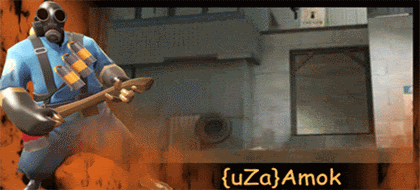|
This is from todays NY Times.
Unmanned eyes in the sky
Predator drones prove vital in Iraq, Afghanistan war zones
By Christopher Drew
NEW YORK TIMES NEWS SERVICE
2:00 a.m. March 17, 2009
Predator unmanned aerial vehicles are made in San Diego by General Atomics Aeronautical Systems. (Jim Wilson / The New York Times) -
Armed with two Hellfire missiles, a Predator drone carried out a combat mission over southern Afghanistan. (U.S. Air Force photo)
A missile fired by a U.S. drone killed at least four people late Sunday at the house of a militant commander in northwest Pakistan, marking the latest use of what intelligence officials have called their most effective weapon against al-Qaeda.
And Pentagon officials say the remotely piloted planes, which can beam back live video for up to 22 hours, have done more than any other weapons system to track down insurgents and save American lives in Iraq and Afghanistan.
The planes have become one of the military's favorite weapons despite many shortcomings resulting from the rush to get them into the field.
A sharp rise in demand for the drones is contributing to new thinking inside the Pentagon about how to develop and deploy new weapons systems.
Air Force officials acknowledge that more than a third of their unmanned Predator spy planes – which are 27 feet long, powered by a snowmobile engine and cost $4.5 million apiece – have crashed, mostly in Iraq and Afghanistan.
Pilots, who fly them from trailers halfway around the world using joysticks and computer screens, say some of the controls are clunky. For example, the missile-firing button sits dangerously close to the switch that shuts off the plane's engines. Pilots are also in such short supply that the service recently put out a call for retirees to help.
But military leaders say they can easily live with all that.
Since the height of the Cold War, the military has tended to chase the boldest and most technologically advanced solution to every threat, leading to long delays and cost overruns that result in rarely used fighter jets that cost $143 million apiece, and plans for a $3 billion destroyer that the Navy says it can no longer afford.
Now the Pentagon appears to be warming up to Voltaire's famous saying, “The perfect is the enemy of the good.”
In speeches, Defense Secretary Robert Gates has urged his weapons buyers to rush out “75 percent solutions over a period of months” instead of waiting for “gold-plated” solutions.
Officials say they plan to free up more money for simpler systems like drones that can pay dividends now, especially as fighting intensifies in Afghanistan and Pakistan.
A rare behind-the-scenes look at the use of the Predator shows both the difficulties and the rewards in pushing out weapons more quickly.
“I'll be really candid,” said Col. Eric Mathewson, who directs the Air Force's task force on unmanned aerial systems. “We're on the ragged edge.”
He said the service has been scrambling to train more pilots, who fly the drones via satellite links from the western United States, to keep up with a near-tripling of daily missions over the past two years.
Field commanders in Iraq and Afghanistan, where the Air Force is in charge of the Predators, say their ability to loiter over an area for hours, streaming instant video warnings of insurgent activity, has been crucial to reducing threats from roadside bombs and identifying terrorist compounds. The CIA is in charge of drone flights in Pakistan, where more than three dozen missile strikes have been launched against al-Qaeda and Taliban leaders in recent months.
Considered a novelty a few years ago, the Air Force's fleet has grown to 195 Predators and 28 Reapers, a new and more heavily armed cousin of the Predator. Including drones that the Army has used to counter roadside bombs and tiny hand-launched models that can help soldiers to peer past the next hill or building, the number of military drones has soared to 5,500 from 167 in 2001.
Both the Predator and the Reaper are made in San Diego by General Atomics Aeronautical Systems.
The Reaper, when compared with the Predator, represents a major evolution of the unmanned aerial vehicle, or UAV.
At five tons gross weight, the Reaper is four times heavier than the Predator. While the Predator is armed with two Hellfire missiles, the Reaper can carry 14 of the air-to-ground weapons, or four Hellfires and two 500-pound bombs.
The urgent need for more drones has meant bypassing usual procedures. Some of the 70 Predator crashes, for example, stemmed from decisions to deploy the planes before they had completed testing and to hold off replacing control stations to avoid interrupting the supply of intelligence.
“The context was to do just the absolute minimum needed to sustain the fight now, and accept the risks, while making fixes as you go along,” Mathewson said.
It is easier, of course, for the military to take more risks with unmanned planes.
Complaints about civilian casualties, particularly from strikes in Pakistan, have stirred some concerns among human-rights advocates. Military officials say the ability of drones to observe targets for lengthy periods makes strikes more accurate. They also said they do not fire if they think civilians are nearby. The Predators were still undergoing basic testing when they were rushed into use in Bosnia and Kosovo in the 1990s and then hastily armed with missiles after the Sept. 11, 2001, terrorist attacks.
But it was only after the military turned to new counterinsurgency techniques in early 2007 that the demand for drones became almost insatiable. Since then, Air Force Lt. Gen. Gary North, the air-component commander for the combined forces in Iraq and Afghanistan, said the service has gone to “amazing lengths” to increase their use.
The Predators and Reapers are now flying 34 surveillance patrols each day in Iraq and Afghanistan, up from 12 in 2006. They are also transmitting 16,000 hours of video each month, some of it directly to troops on the ground.
The strains of these growing demands were evident on a recent visit to Davis-Monthan Air Force Base in Tucson, one of four bases where Air National Guard units have been ordered to full-time duty to help alleviate crew shortages.
The Guard members, along with Air Force crews at a base in the Nevada desert, are 7,000 to 8,000 miles away from the planes they are flying. Most of the crews sit at 1990s-style computer banks filled with screens, inside dimly lit trailers. Many fly missions in both Iraq and Afghanistan on the same day.
On a recent day, at 1:15 p.m. in Tucson – 1:15 the next morning in Afghanistan – a pilot and sensor operator were staring at gray-toned video from the Predator's infrared camera, which can make even the darkest night scene surprisingly clear.
The crew was scanning a road, looking for – but not finding – signs of anyone planting improvised explosive devices or lying in wait for a convoy.
As the Predator circled at 16,000 feet, the dark band of a river and craggy hills came into view, along with ribbons of farmland.
“We spend 70 to 80 percent of our time doing this, just scanning roads,” said the pilot, Maj. Matthew Morrison.
At other times, the crews monitor insurgent compounds and watch over troops in battle. “When you're on the radio with a guy on the ground, and he is out of breath and you can hear the weapons fire in the background, you are every bit as engaged as if you were actually there,” Morrison said.
The Associated Press contributed to this report.
|














